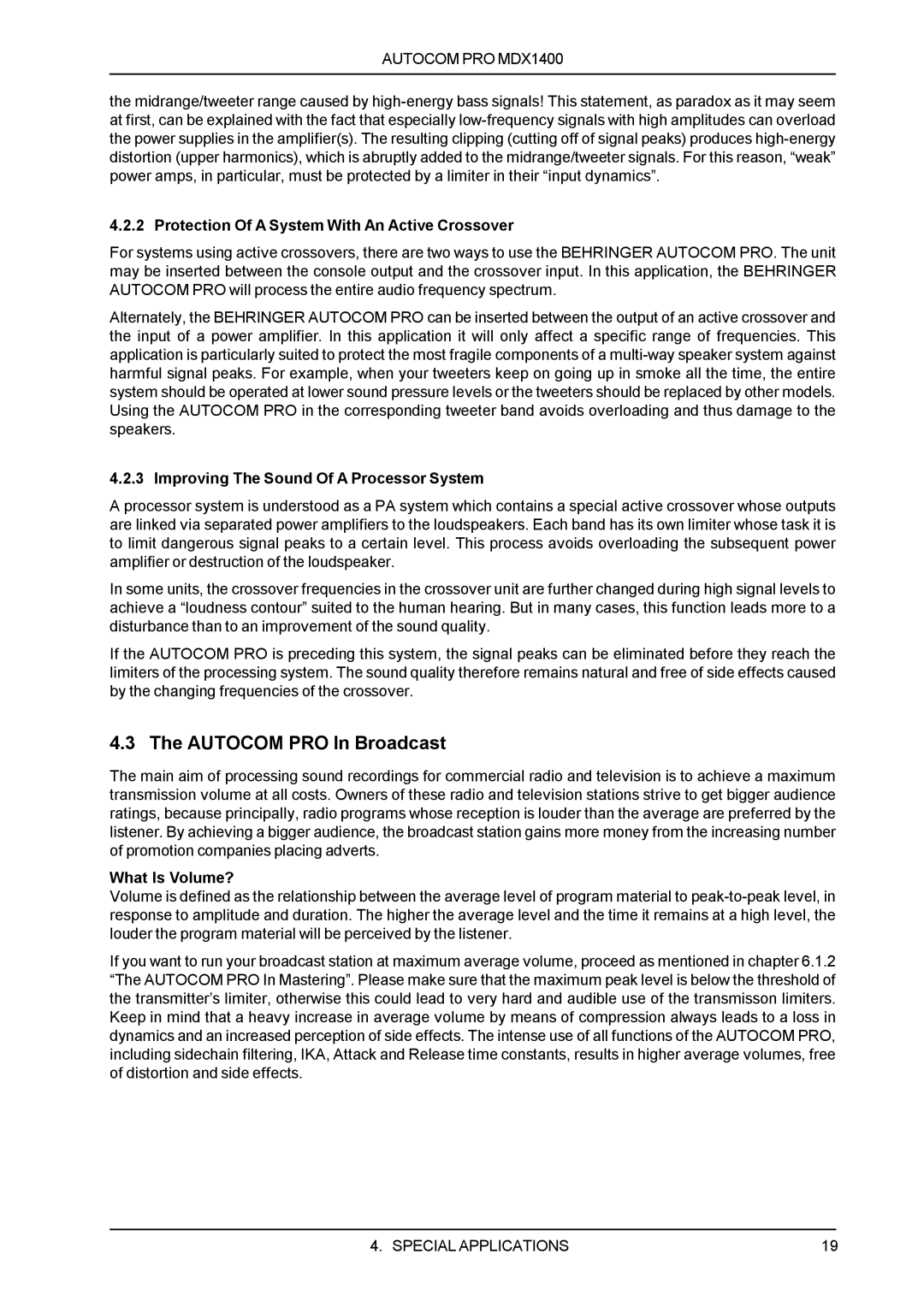
AUTOCOM PRO MDX1400
the midrange/tweeter range caused by
4.2.2 Protection Of A System With An Active Crossover
For systems using active crossovers, there are two ways to use the BEHRINGER AUTOCOM PRO. The unit may be inserted between the console output and the crossover input. In this application, the BEHRINGER AUTOCOM PRO will process the entire audio frequency spectrum.
Alternately, the BEHRINGER AUTOCOM PRO can be inserted between the output of an active crossover and the input of a power amplifier. In this application it will only affect a specific range of frequencies. This application is particularly suited to protect the most fragile components of a
4.2.3 Improving The Sound Of A Processor System
A processor system is understood as a PA system which contains a special active crossover whose outputs are linked via separated power amplifiers to the loudspeakers. Each band has its own limiter whose task it is to limit dangerous signal peaks to a certain level. This process avoids overloading the subsequent power amplifier or destruction of the loudspeaker.
In some units, the crossover frequencies in the crossover unit are further changed during high signal levels to achieve a “loudness contour” suited to the human hearing. But in many cases, this function leads more to a disturbance than to an improvement of the sound quality.
If the AUTOCOM PRO is preceding this system, the signal peaks can be eliminated before they reach the limiters of the processing system. The sound quality therefore remains natural and free of side effects caused by the changing frequencies of the crossover.
4.3 The AUTOCOM PRO In Broadcast
The main aim of processing sound recordings for commercial radio and television is to achieve a maximum transmission volume at all costs. Owners of these radio and television stations strive to get bigger audience ratings, because principally, radio programs whose reception is louder than the average are preferred by the listener. By achieving a bigger audience, the broadcast station gains more money from the increasing number of promotion companies placing adverts.
What Is Volume?
Volume is defined as the relationship between the average level of program material to
If you want to run your broadcast station at maximum average volume, proceed as mentioned in chapter 6.1.2 “The AUTOCOM PRO In Mastering”. Please make sure that the maximum peak level is below the threshold of the transmitter’s limiter, otherwise this could lead to very hard and audible use of the transmisson limiters. Keep in mind that a heavy increase in average volume by means of compression always leads to a loss in dynamics and an increased perception of side effects. The intense use of all functions of the AUTOCOM PRO, including sidechain filtering, IKA, Attack and Release time constants, results in higher average volumes, free of distortion and side effects.
4. SPECIAL APPLICATIONS | 19 |
